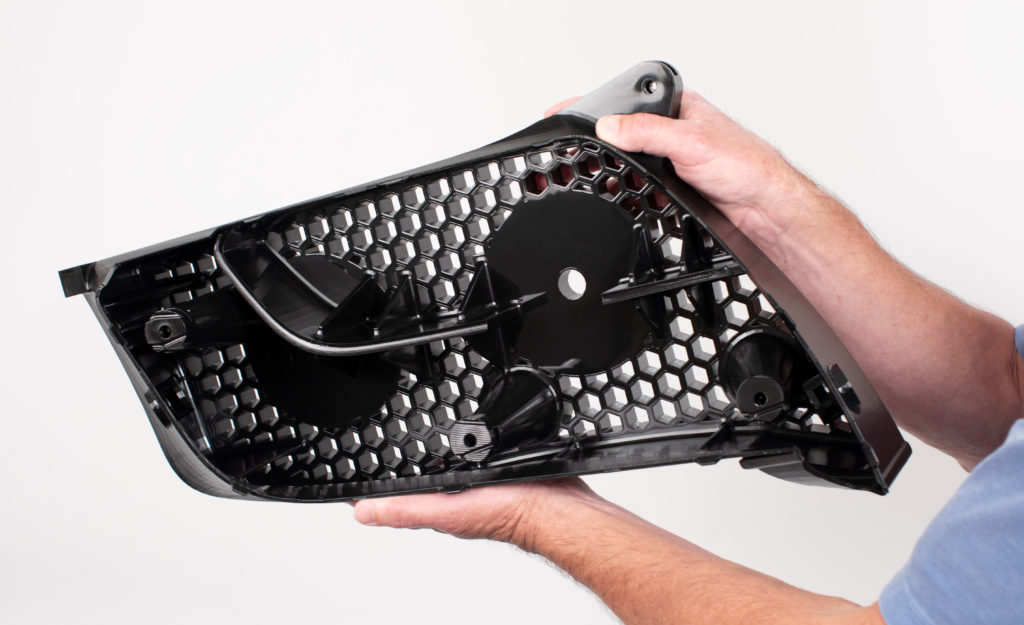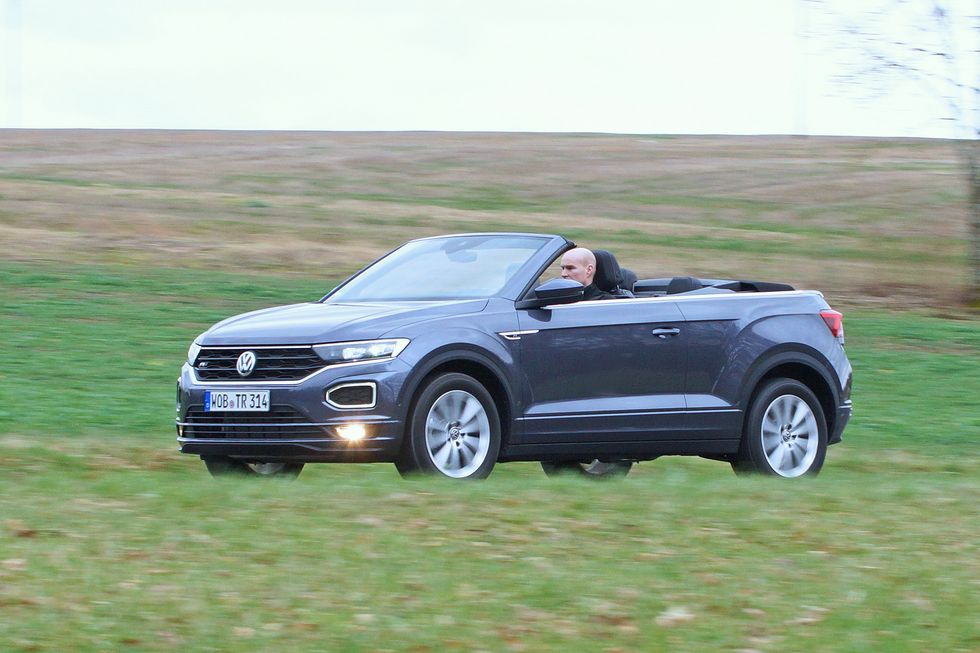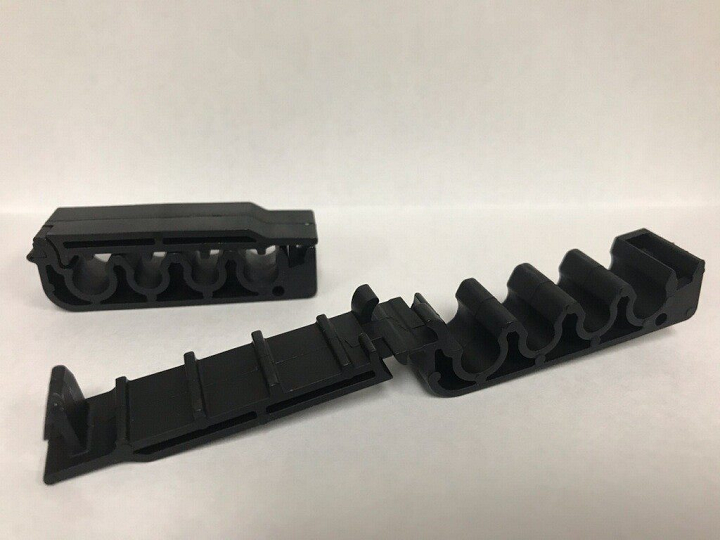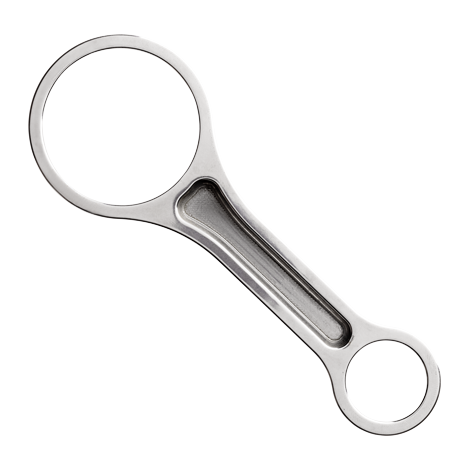Recently, our executive editor Joris Peels explained that, in the automotive industry, 3D printing is typically used most often for unique, mass-customized components; very low-run production items; “some weight savings parts and extremely low-volume parts on passenger cars.” That may be changing, however, as he mentioned in early 2021 that the “car industry is becoming excited about 3D printing.”
While it may not always seem like the technology has formed as strong a foothold in automotive as it has in other sectors, 3D printing actually is used quite often for these types of applications. We asked some industry experts for their thoughts on what AM in the automotive industry will look like this year.
“Although not discussed much, I am confident that additive manufacturing for prototyping and tooling continues to be quite vibrant,” 3D printing consultant, writer, and presenter Todd Grimm told 3DPrint.com. “The noticeable change in 2021 was in the area of series production. The tide seems to have shifted as OEMs and suppliers create innovations and initiate disruptions that sidestep what has stymied additive manufacturing for years: unit cost and annual production rates. I believe that the momentum of last year will carry forward in 2022 and beyond such that automotive applications for additive manufacturing aren’t relegated to racecars, hypercars, and ultra-high-end vehicles.”
As SmarTech Analysis mentioned in its last report on additive manufacturing for automotive parts production, automotive 3D printing represents a $9 billion revenue opportunity.
“This report assesses the overall opportunity for additive manufacturing in the automotive industry, including upcoming metal and polymer processes and materials that are going to gain wider adoption during the 10-year forecast period. These include leading polymer as well as new high-throughput metal and polymer AM technologies such as digital light synthesis from Carbon, multijet fusion from HP, as well as new bound metal filament and upcoming metal binder jetting processes,” SmarTech wrote.
Speaking of HP, Guayente Sanmartin, Global Head of HP’s MJF business, said that automotive is one of many industries “undergoing digital transformation” by shifting quickly to more connectivity in vehicles, “supply chain localization, and supplier consolidation.”
“HP is working with dozens of automakers, suppliers, and production partners around the world to design and develop sustainable parts from prototyping to production,” Sanmartin explained.
For example, in late 2021, Japanese CAD and 3D printing company SOLIZE announced that it would be using HP 3D printers to make out-of-production end-use spare parts for NISMO, which is Nissan’s tuning and motorsport division. The reasons for using the technology included flexible design, a virtual inventory, and sustainable on-demand production that helps reduce industrial waste and carbon dioxide emissions.
“Every day we are seeing growing traction and more mature 3D printed applications across many different industries, especially in automotive. Automakers are forging ahead as they broaden their use of 3D printing, replacing traditional tooling with 3D printed versions, rapidly iterating with functional prototypes, designing entirely new personalized components, and expanding short-run production of fully functional final parts,” Sanmartin continued. “Our customers are taking advantage of the industrial-grade capabilities – efficiency, repeatability, part quality, cost effectiveness and more – provided by Multi Jet Fusion to deliver on these growing opportunities.”
Sanmartin also referenced a recent US Council of Automotive Research (USCAR) report, which “outlines a roadmap for integrating additive manufacturing more broadly into the industry’s high-volume production processes.” USCAR mentions that 3D printing “has yet to become integrated into high-volume production processes” in the automotive sector, even though that industry has been using the technology for decades, due to challenges like expensive equipment, materials, and operations, and a lack of the “speed and reliability needed for high volume applications.” But, the report also discusses the potential for growth, and possible benefits, of 3D printing in the automotive industry.
“We are very excited about the promise of additive for mass metal manufacturing, the fastest growing segment of the traditional 3D printing market. Based on HP’s core Thermal Inkjet capabilities, our Metal Jet technology enables the production from high volume runs to truly unique high-value parts. We believe our modular system and integrated workflow delivers better productivity, lower part cost, and superior quality,” said Didier Deltort, the President of HP’s Personalization & 3D Printing business. “For example, I am very pleased with our advancements with Volkswagen. Volkswagen shared a recent use case highlighting HP Metal Jet produced parts for the A pillar of the T-Roc Cabriolet. The structural parts have passed crash test certification and weigh almost 50 percent less than conventional components. Auto manufacturers are among the most demanding in the world. This is the first time an automaker is using metal binder jetting for structural components. We are continuing to validate production applications with partners and customers as we move toward broader commercial Metal Jet availability in 2022.”
Another benefit of 3D printing, as mentioned earlier, is sustainability, which HP has long considered a major priority.
“As companies look to meet the demand for more personalized products they are also looking to deliver more sustainable products and packaging. When HP surveyed global digital manufacturing and 3D printing decision makers in late-2020, an overwhelming majority (89%) said they were changing their business models, and at least 9 out of 10 were investigating new and more sustainable supply chain models,” Deltort said. “3D printing is providing more sustainable manufacturing methods from sustainable design that removes excess weight and waste to local production that leads to a lower carbon footprint.”
Not too long ago, HP announced that it was partnering with Ford to change how 3D printing waste is reused in the automotive industry. The two set up a sustainability program that turns 3D printed parts and powder into injection molded fuel-line clips, which will first be installed on Ford’s Super Duty F-250 trucks.
Desktop Metal is another company focused on sustainability in 3D printing, as the company’s Co-Founder and CTO Jonah Myerberg told us that companies will be pushed to “embrace the 4th industrial revolution” due to sustainability expectations being introduced by state and federal governments.
“The automotive industry has seen the greatest impact of green initiatives – from EV mandates in the state of California, to President Biden’s Build Back Better plans. This will bleed into other industries in 2022 including retail, consumer goods, aerospace, healthcare and more—leading companies to more fully embrace and realize the 4th industrial revolution,” Myerberg told 3DPrint.com.
Desktop Metal made headlines recently when an unnamed major German automaker put in a $7.9 million order for its binder jetting additive manufacturing systems; the company’s 3D printers have been used by Ford as well. Myerberg also noted that as companies continue to face shortened supply lines, they’re looking for new ways to address these challenges, and technologies like robotics, 3D printing, and AI “will play a key role.”
“Moving into 2022, manufacturers will look to embrace these technologies to help shorten their supply lines, reimagine the factory, and revolutionize how global business is done,” Myerberg said.
The company’s CEO, Ric Fulop, echoed these thoughts, noting that 3D printing will give companies, including those in the automotive sector, “the opportunity to re-shore production.”
“There has been massive growth and consolidation in the additive manufacturing space, which is providing companies the ability to rethink their manufacturing operations and re-shore them back to the U.S. as it becomes more affordable,” Fulop told us. “Now, companies have access to additive manufacturing wherever they want the parts made and don’t have to rely on consolidation and transportation across the world. This will result in an increase in jobs within the US, an emphasis on education for the workforce, and a decrease in reliance on long supply chains.”

This automotive grill CNC fixture was manufactured using 3D Systems’ new Accura AMX Rigid Black – achieving a long-lasting production part with smooth sidewalls & superior isotropic strength.
Dr. Jeffrey Graves, the President and CEO of 3D Systems, also agreed.
“As we enter 2022, I believe we’ll continue to see AM play a critical role in transforming manufacturing workflows and supply chains. Significant delays in logistics are hampering organizations’ ability to deliver products and services in a timely fashion. Being able to manufacture all critical components at the point of assembly, or point of care can streamline these activities,” Dr. Graves said.
“I also anticipate AM’s ability to enable mass customization will bring enormous value to a host of applications to benefit both industries and people. From automotive to aerospace, semiconductor capital equipment manufacturers to service bureaus, and healthcare providers, AM has the power to improve efficiencies by simultaneously producing numerous unique, end-use parts.”
Finally, Nexa3D’s Co-Founder, Chairman, and CEO Avi Reichental believes that 3D printing in the automotive industry is definitely here to stay, both in 2022 and beyond.
“Certainly the automotive sector remains among the largest for 3D printing,” Reichental told 3DPrint.com. “The less glamorous parts of vehicle manufacture, tooling, jigs, and fixtures, will see more adoption. These can be made specific for a particular make and model, significantly speeding up the time it takes to build cars. Widening options for casting will also see polymer 3D printing take a larger role in the automotive industry, as metal parts can be made at lower cost than direct metal AM and with increased complexity compared to traditional manufacturing.”
At our upcoming Additive Manufacturing Strategies summit, held online and in-person in New York City from March 1-3, industry experts will be discussing nine critical AM verticals, including 3D printing in the automotive industry. Topics in this session include 3D printing and mass customization, sensors and autonomous vehicles, AM in motorsports, and more. You can register for the hybrid event here.
Subscribe to Our Email Newsletter
Stay up-to-date on all the latest news from the 3D printing industry and receive information and offers from third party vendors.
Print Services
Upload your 3D Models and get them printed quickly and efficiently.
You May Also Like
Consolidation in AM: How 2025 Is Shaping the Industry’s New Normal
The first half of 2025 has been marked by a clear shift in the additive manufacturing (AM) industry. Companies are no longer just focused on developing new tech by themselves....
Etsy Design Rule Change Reduces Selection of 3D Printed Goods
Online marketplace Etsy has implemented a rule change requiring all 3D printed goods on the site to be original designs. The update to the site’s Creativity Standards states, ¨Items produced using...
U.S. Congress Calls Out 3D Printing in Proposal for Commercial Reserve Manufacturing Network
Last week, the U.S. House of Representatives’ Appropriations Committee moved the FY 2026 defense bill forward to the House floor. Included in the legislation is a $131 million proposal for...
Transforming From Tourist to Native: Duro CEO Michael Corr Explains Why the Company Rebuilt its PLM Software on AI
In these early innings of the AI boom, many market analysts have expressed concern that AI spend has gotten too far ahead of the technology’s proven ability to deliver significant...




































